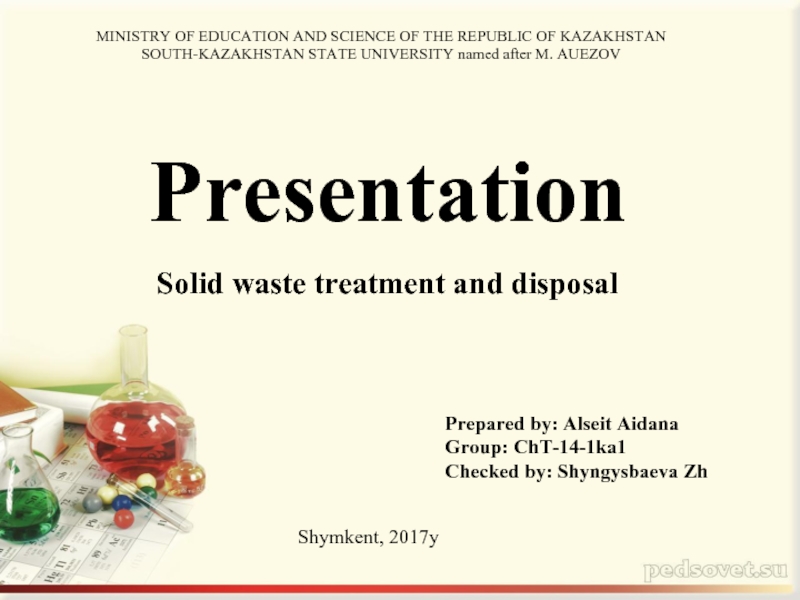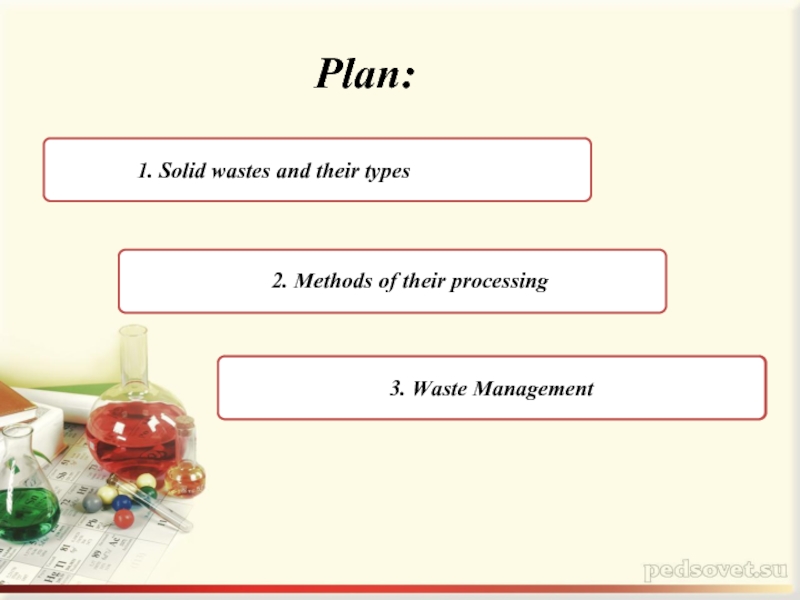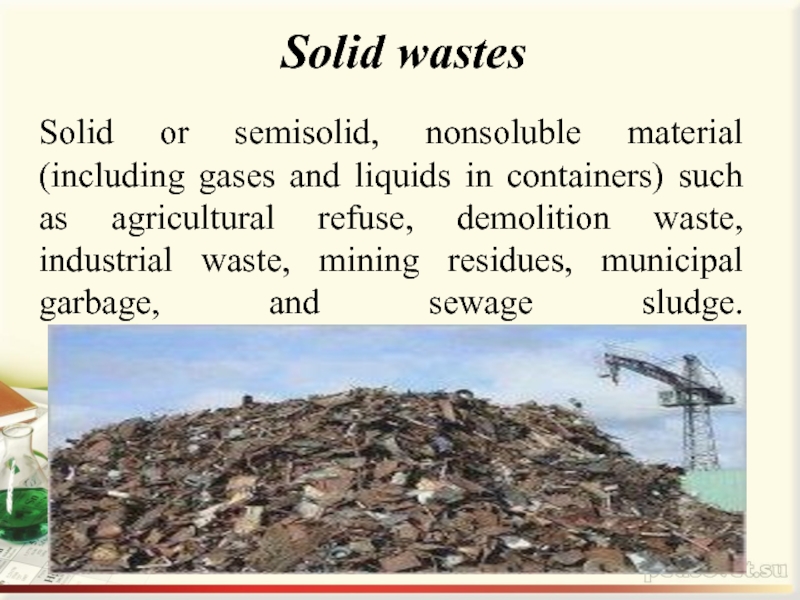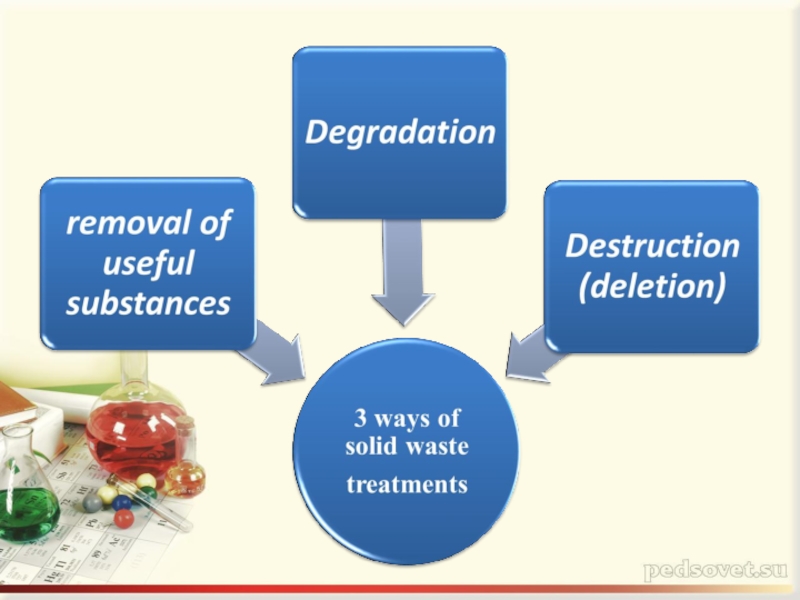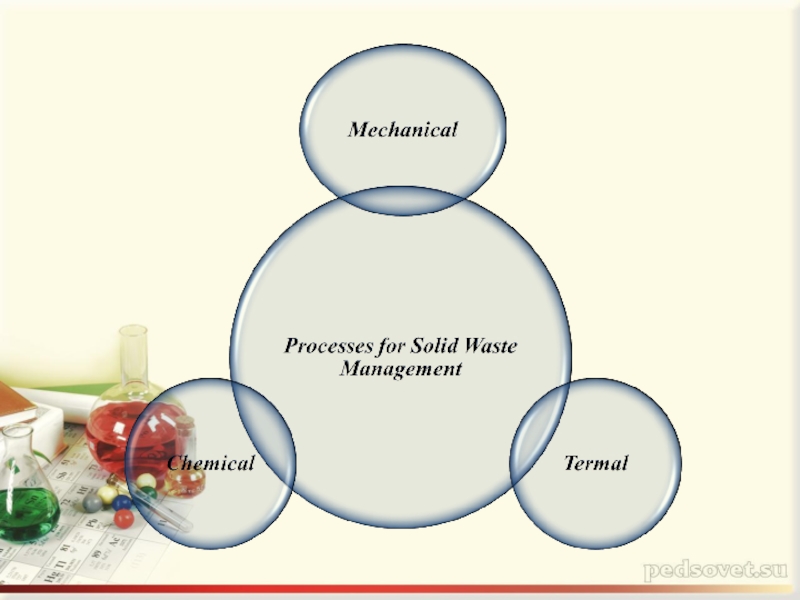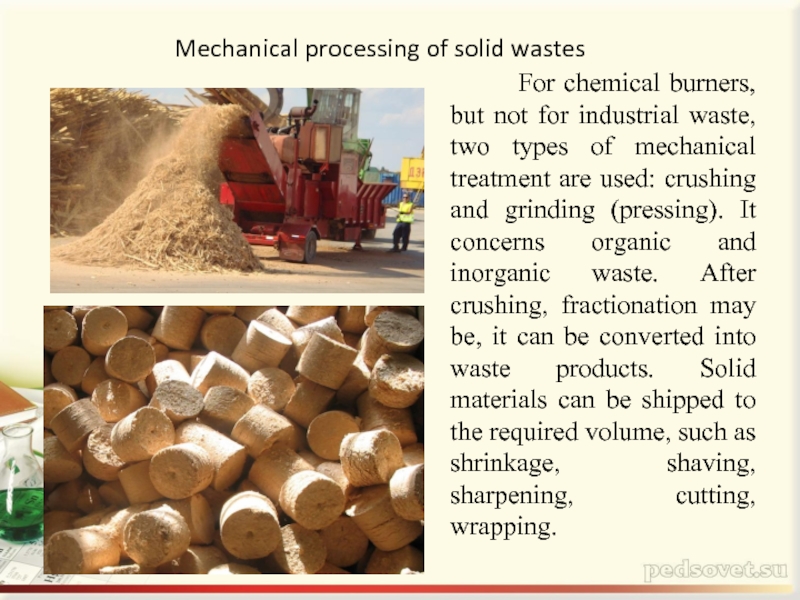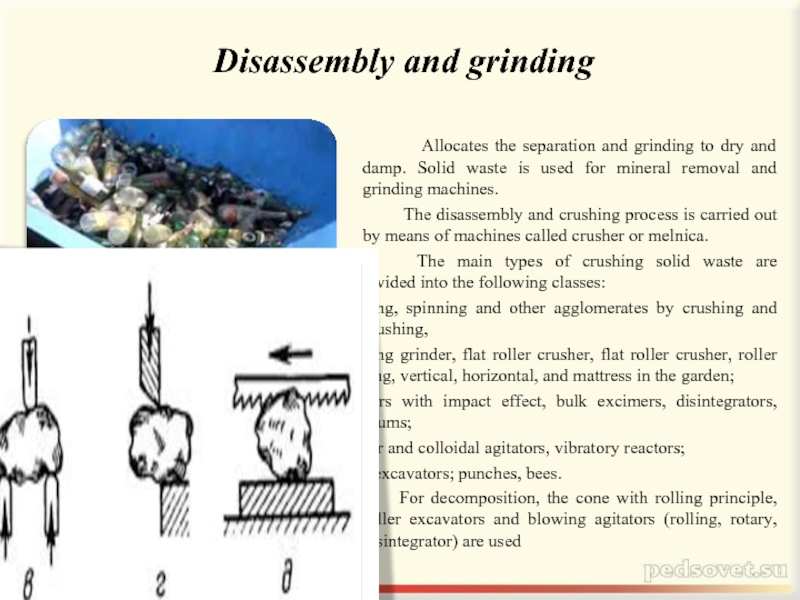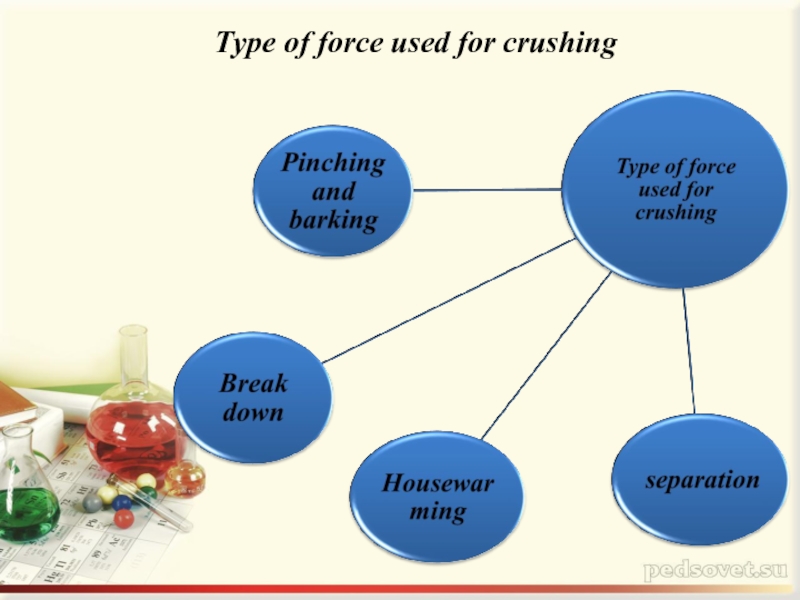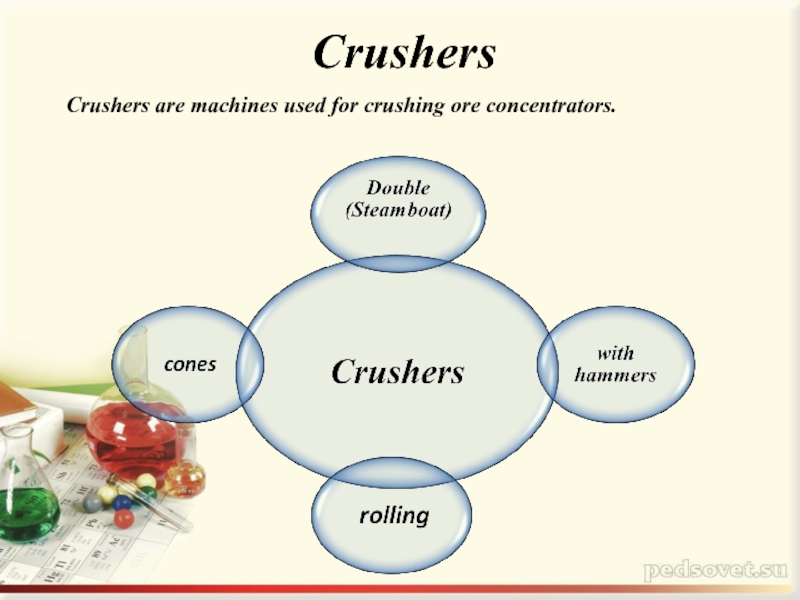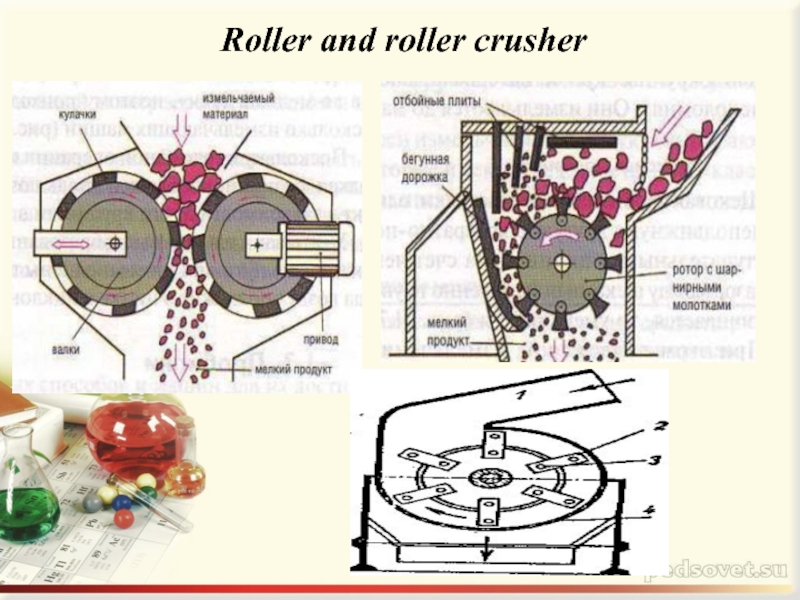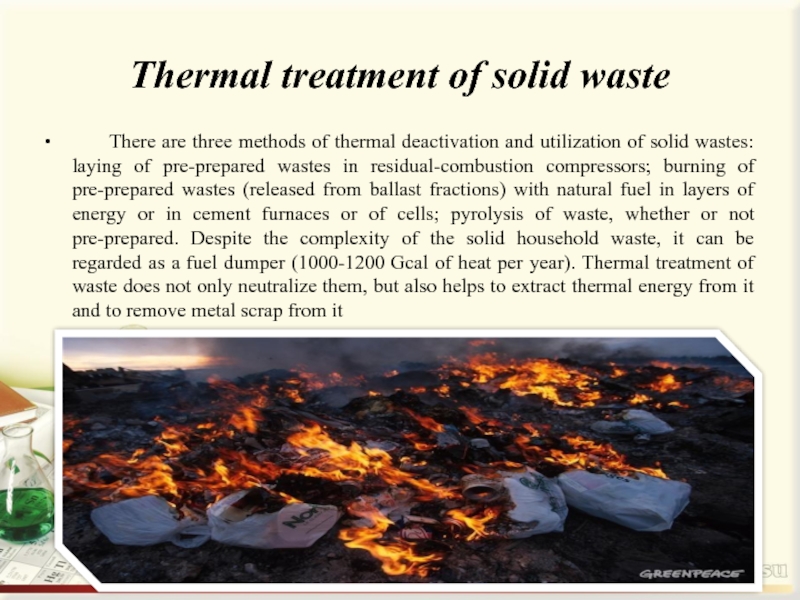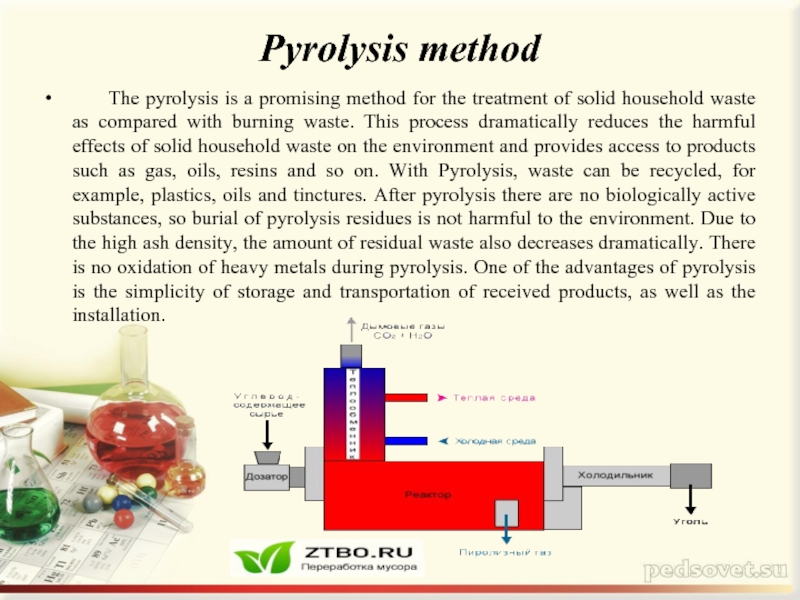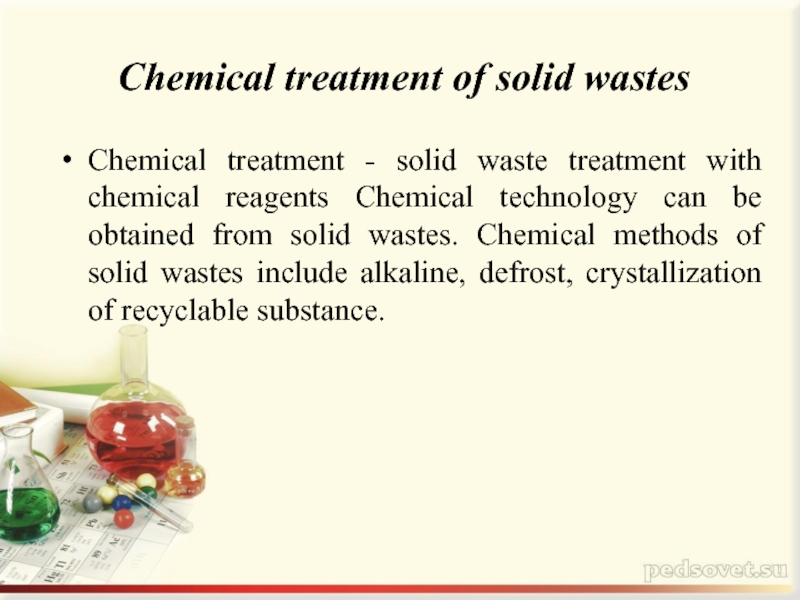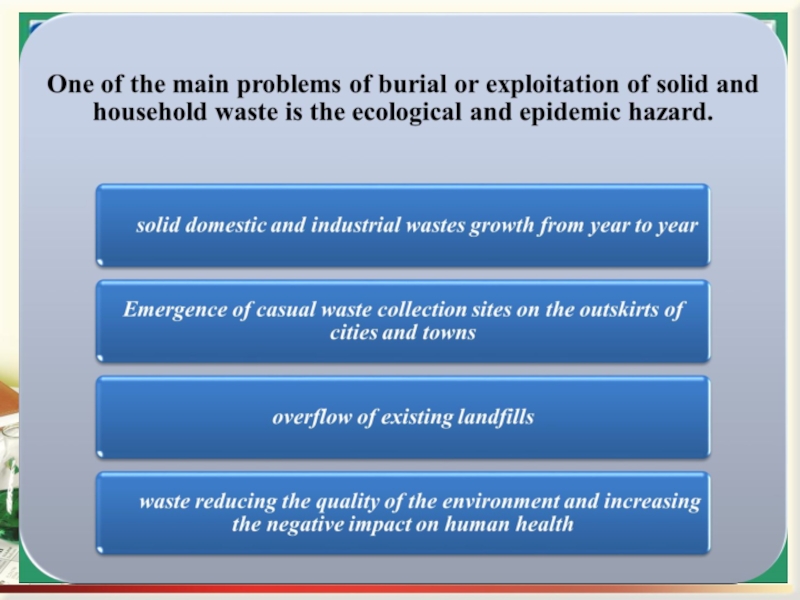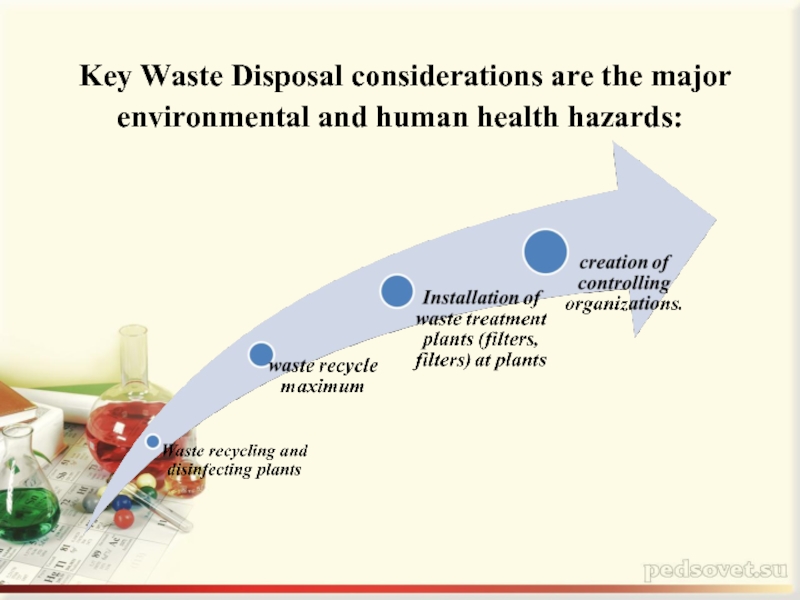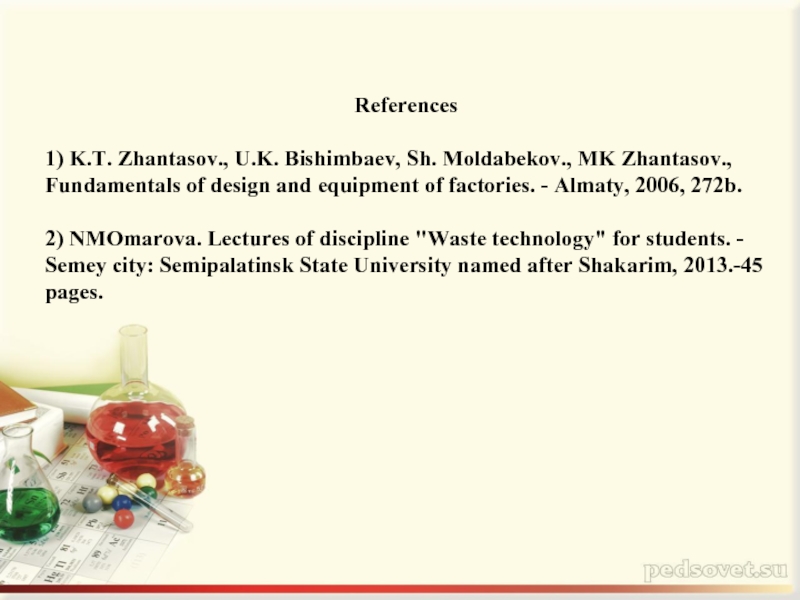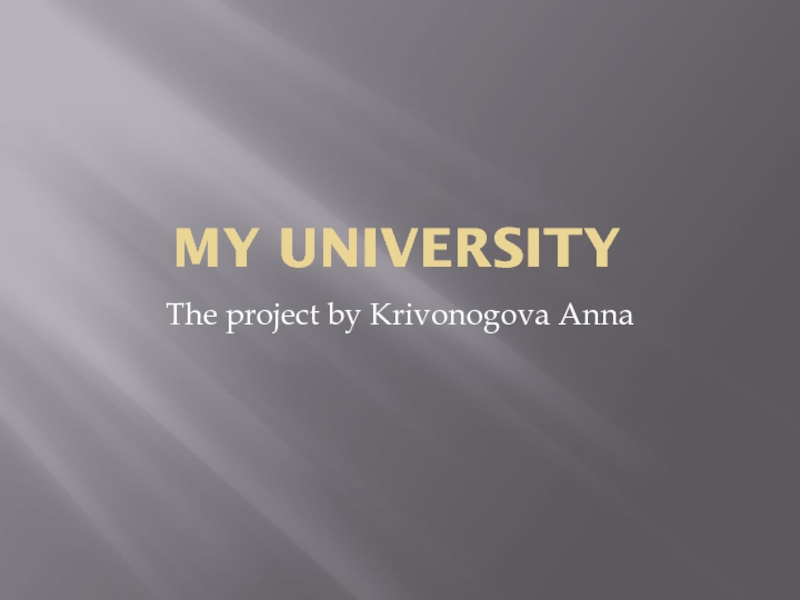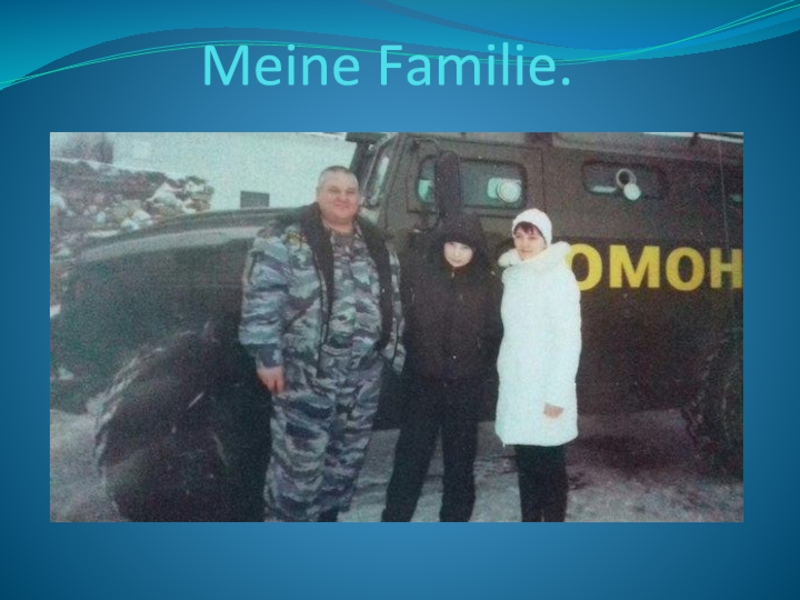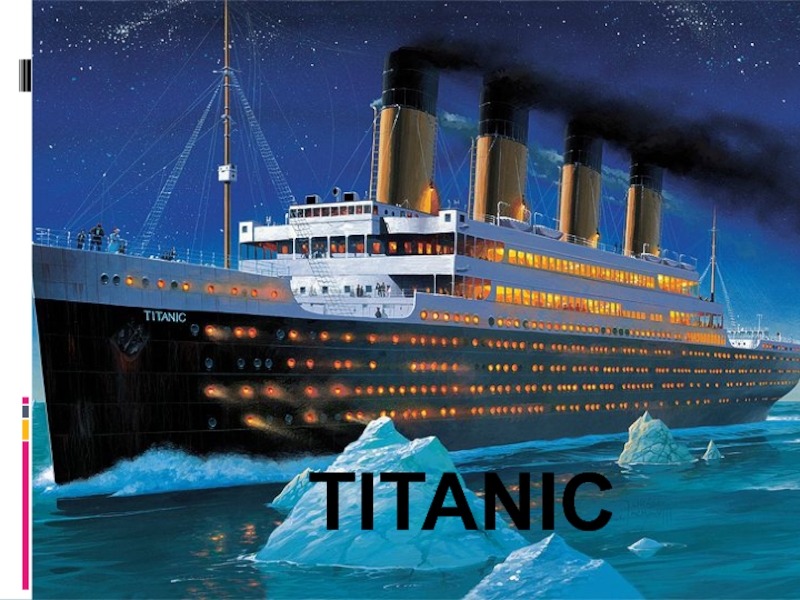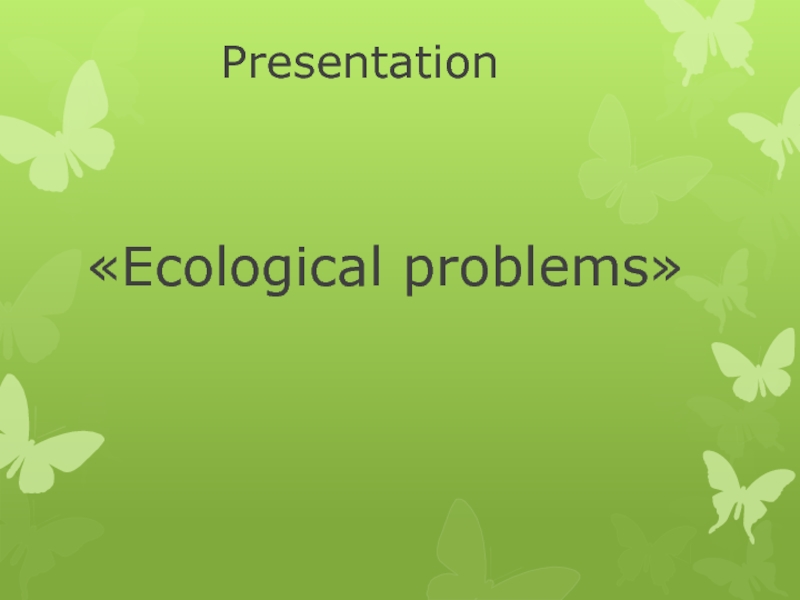MINISTRY OF EDUCATION AND SCIENCE OF THE REPUBLIC OF KAZAKHSTAN
SOUTH-KAZAKHSTAN STATE UNIVERSITY named after M. AUEZOV
- Главная
- Разное
- Дизайн
- Бизнес и предпринимательство
- Аналитика
- Образование
- Развлечения
- Красота и здоровье
- Финансы
- Государство
- Путешествия
- Спорт
- Недвижимость
- Армия
- Графика
- Культурология
- Еда и кулинария
- Лингвистика
- Английский язык
- Астрономия
- Алгебра
- Биология
- География
- Детские презентации
- Информатика
- История
- Литература
- Маркетинг
- Математика
- Медицина
- Менеджмент
- Музыка
- МХК
- Немецкий язык
- ОБЖ
- Обществознание
- Окружающий мир
- Педагогика
- Русский язык
- Технология
- Физика
- Философия
- Химия
- Шаблоны, картинки для презентаций
- Экология
- Экономика
- Юриспруденция
Solid waste treatment and disposal презентация
Содержание
- 1. Solid waste treatment and disposal
- 3. Solid wastes Solid or semisolid, nonsoluble material
- 6. Mechanical processing of solid wastes
- 7. Disassembly and grinding
- 8. Type of force used for crushing
- 9. Crushers Crushers are machines used for crushing ore concentrators.
- 10. Two-sided and cone chopper Figure 1. The
- 11. Roller and roller crusher
- 12. Thermal treatment of solid waste
- 13. Pyrolysis method The pyrolysis
- 14. Chemical treatment of solid wastes Chemical treatment
- 16. Key Waste Disposal considerations are the major environmental and human health hazards:
- 17. References 1) K.T. Zhantasov., U.K. Bishimbaev,
Слайд 1Presentation
Prepared by: Alseit Aidana
Group: ChT-14-1ka1
Checked by: Shyngysbaeva Zh
Shymkent, 2017y
Solid waste treatment
and disposal
Слайд 2 1. Solid wastes
and their types
3. Қалдықтарды жою шаралары
2. Methods of their processing
Plan:
3. Waste Management
Слайд 3Solid wastes
Solid or semisolid, nonsoluble material (including gases and liquids in
containers) such as agricultural refuse, demolition waste, industrial waste, mining residues, municipal garbage, and sewage sludge.
Слайд 6
Mechanical processing of solid wastes
For
chemical burners, but not for industrial waste, two types of mechanical treatment are used: crushing and grinding (pressing). It concerns organic and inorganic waste. After crushing, fractionation may be, it can be converted into waste products. Solid materials can be shipped to the required volume, such as shrinkage, shaving, sharpening, cutting, wrapping.
Слайд 7Disassembly and grinding
Allocates
the separation and grinding to dry and damp. Solid waste is used for mineral removal and grinding machines.
The disassembly and crushing process is carried out by means of machines called crusher or melnica.
The main types of crushing solid waste are divided into the following classes:
crushing, spinning and other agglomerates by crushing and crushing,
crushing grinder, flat roller crusher, flat roller crusher, roller ring, vertical, horizontal, and mattress in the garden;
crushers with impact effect, bulk excimers, disintegrators, drums;
- vapor and colloidal agitators, vibratory reactors;
other excavators; punches, bees.
For decomposition, the cone with rolling principle, roller excavators and blowing agitators (rolling, rotary, disintegrator) are used
The disassembly and crushing process is carried out by means of machines called crusher or melnica.
The main types of crushing solid waste are divided into the following classes:
crushing, spinning and other agglomerates by crushing and crushing,
crushing grinder, flat roller crusher, flat roller crusher, roller ring, vertical, horizontal, and mattress in the garden;
crushers with impact effect, bulk excimers, disintegrators, drums;
- vapor and colloidal agitators, vibratory reactors;
other excavators; punches, bees.
For decomposition, the cone with rolling principle, roller excavators and blowing agitators (rolling, rotary, disintegrator) are used
Слайд 10Two-sided and cone chopper
Figure 1. The method of the three-layer crushers:
Stage 1; 2-moving jaw; 3-axis centrifugal shaft; 4th roof; 5th front plate; 6 rear plate; Drive 7; Spring 8; 9 Adjustment Tests.
Слайд 12Thermal treatment of solid waste
There are three
methods of thermal deactivation and utilization of solid wastes: laying of pre-prepared wastes in residual-combustion compressors; burning of pre-prepared wastes (released from ballast fractions) with natural fuel in layers of energy or in cement furnaces or of cells; pyrolysis of waste, whether or not pre-prepared. Despite the complexity of the solid household waste, it can be regarded as a fuel dumper (1000-1200 Gcal of heat per year). Thermal treatment of waste does not only neutralize them, but also helps to extract thermal energy from it and to remove metal scrap from it
Слайд 13Pyrolysis method
The pyrolysis is a promising method for
the treatment of solid household waste as compared with burning waste. This process dramatically reduces the harmful effects of solid household waste on the environment and provides access to products such as gas, oils, resins and so on. With Pyrolysis, waste can be recycled, for example, plastics, oils and tinctures. After pyrolysis there are no biologically active substances, so burial of pyrolysis residues is not harmful to the environment. Due to the high ash density, the amount of residual waste also decreases dramatically. There is no oxidation of heavy metals during pyrolysis. One of the advantages of pyrolysis is the simplicity of storage and transportation of received products, as well as the installation.
Слайд 14Chemical treatment of solid wastes
Chemical treatment - solid waste treatment with
chemical reagents Chemical technology can be obtained from solid wastes. Chemical methods of solid wastes include alkaline, defrost, crystallization of recyclable substance.
Слайд 17References
1) K.T. Zhantasov., U.K. Bishimbaev, Sh. Moldabekov., MK Zhantasov., Fundamentals of
design and equipment of factories. - Almaty, 2006, 272b.
2) NMOmarova. Lectures of discipline "Waste technology" for students. - Semey city: Semipalatinsk State University named after Shakarim, 2013.-45 pages.
2) NMOmarova. Lectures of discipline "Waste technology" for students. - Semey city: Semipalatinsk State University named after Shakarim, 2013.-45 pages.
